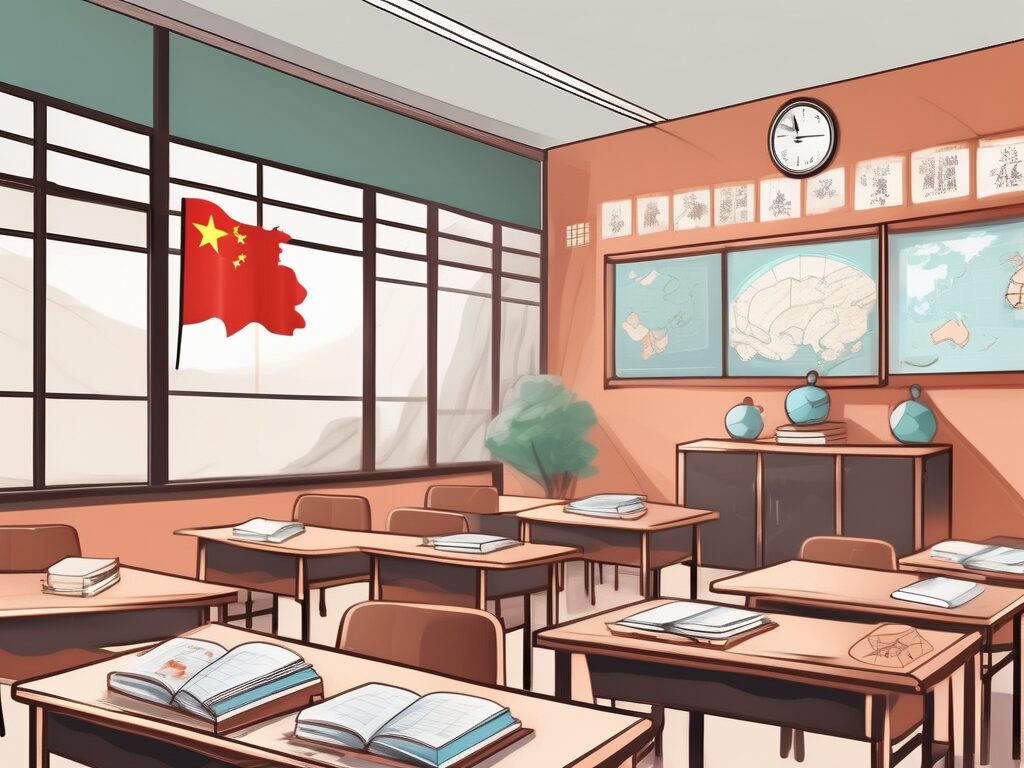The world of education is a constantly evolving landscape, with new methodologies and approaches being developed and implemented across the globe. One such approach that has gained significant traction in recent years is bilingual education. This approach, which involves teaching academic content in two languages, has been adopted in many countries, including China. However, for International Postgraduate Certificate in Education (IPGCE) teachers, there are a number of issues that need to be addressed when it comes to bilingual education in China. In this piece, we’ll delve into four key points that are pertinent to this topic.
1. Understanding the Chinese Bilingual Education System
The Structure of the System
The Chinese bilingual education system is a complex one, with a structure that differs significantly from those found in Western countries. In China, bilingual education typically involves teaching subjects in both Chinese and English. However, the ratio of Chinese to English instruction can vary greatly, depending on the specific school and the level of education. Understanding this structure is crucial for IPGCE teachers, as it can greatly impact the way they approach their teaching.
The Role of English
English plays a significant role in the Chinese bilingual education system. In many schools, English is used as the medium of instruction for subjects such as mathematics and science. This is in contrast to the more traditional approach, where English is taught as a separate subject. For IPGCE teachers, this means that they need to be proficient in both English and the subject they are teaching, adding an extra layer of complexity to their role.
2. Challenges in Implementing Bilingual Education
Language Proficiency
One of the biggest challenges in implementing bilingual education in China is the varying levels of language proficiency among students. Some students may have a strong grasp of English, while others may struggle. This can make it difficult for teachers to ensure that all students are able to fully comprehend the material being taught. It’s a bit like trying to juggle balls of different weights – it requires a lot of skill and adaptability.
Curriculum Development
Another challenge lies in curriculum development. Creating a curriculum that effectively integrates two languages is no easy task. It’s akin to building a bridge between two different lands – it requires careful planning, a deep understanding of both cultures, and a lot of hard work. For IPGCE teachers, this means that they need to be well-versed in both the Chinese and English curriculums, and be able to seamlessly blend the two.
3. The Impact of Cultural Differences
Teaching Styles
Cultural differences can have a significant impact on teaching styles. In China, the traditional teaching style is often more formal and teacher-centred, while in Western countries, a more interactive and student-centred approach is typically favoured. For IPGCE teachers, this can mean having to adapt their teaching style to fit the cultural context, much like a chameleon changing its colours to match its surroundings.
Student Expectations
Similarly, student expectations can also differ greatly. Chinese students may be used to a more rigid and structured learning environment, while Western students may prefer a more flexible and open-ended approach. Navigating these differing expectations can be a bit like walking a tightrope – it requires a delicate balance and a keen understanding of both cultures.
4. The Importance of Professional Development
Continuous Learning
Given the complexities and challenges associated with bilingual education in China, continuous professional development is crucial for IPGCE teachers. This involves constantly updating their knowledge and skills, and staying abreast of the latest trends and developments in bilingual education. It’s a bit like being a lifelong student – there’s always something new to learn and explore.
Collaboration and Networking
Professional development also involves collaboration and networking. By connecting with other educators, IPGCE teachers can share experiences, exchange ideas, and learn from each other. It’s a bit like being part of a community – it provides support, inspiration, and a sense of belonging.
In conclusion, while bilingual education in China presents a number of challenges for IPGCE teachers, it also offers a wealth of opportunities for professional growth and development. By understanding the system, navigating the challenges, embracing cultural differences, and investing in professional development, IPGCE teachers can make a significant impact in the field of bilingual education in China.
Take Your Bilingual Teaching Career to the Next Level with IPGCE
As you navigate the complexities of bilingual education in China, the International Postgraduate Certificate in Education (iPGCE) is your gateway to overcoming common barriers and propelling your teaching career forward. With our program, you’ll not only enhance your qualifications, leading to increased interview callbacks, but also enjoy greater career advancement opportunities, with many reporting significant salary increases. Join a global network of educators, gain a deeper understanding of international curricula, and benefit from our flexible online study options designed for working teachers. Don’t let isolation or underqualification hold you back. Join the UK’s #1 Teacher Training Course today and become part of the success story, making a significant impact in the world of bilingual education.

